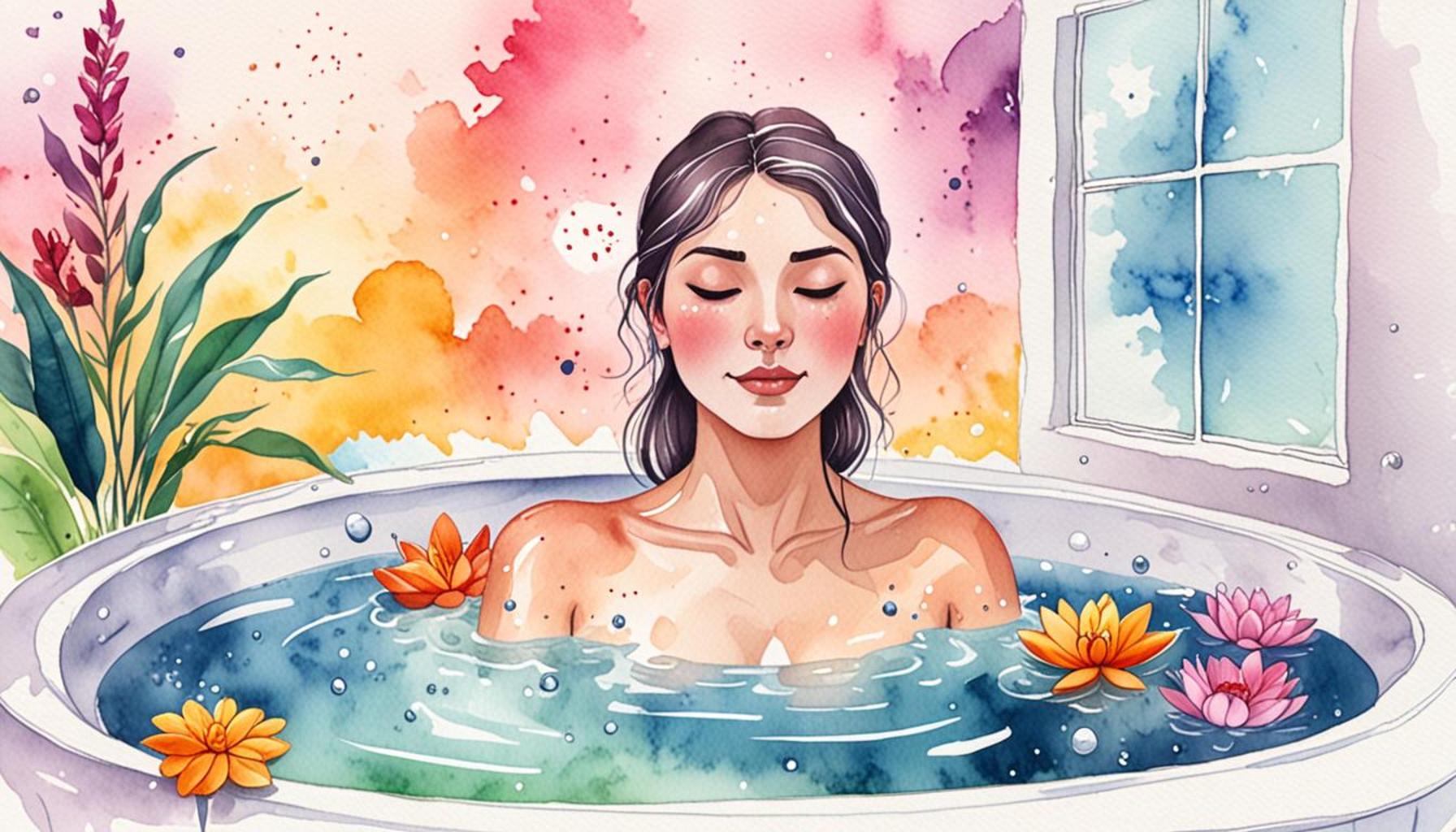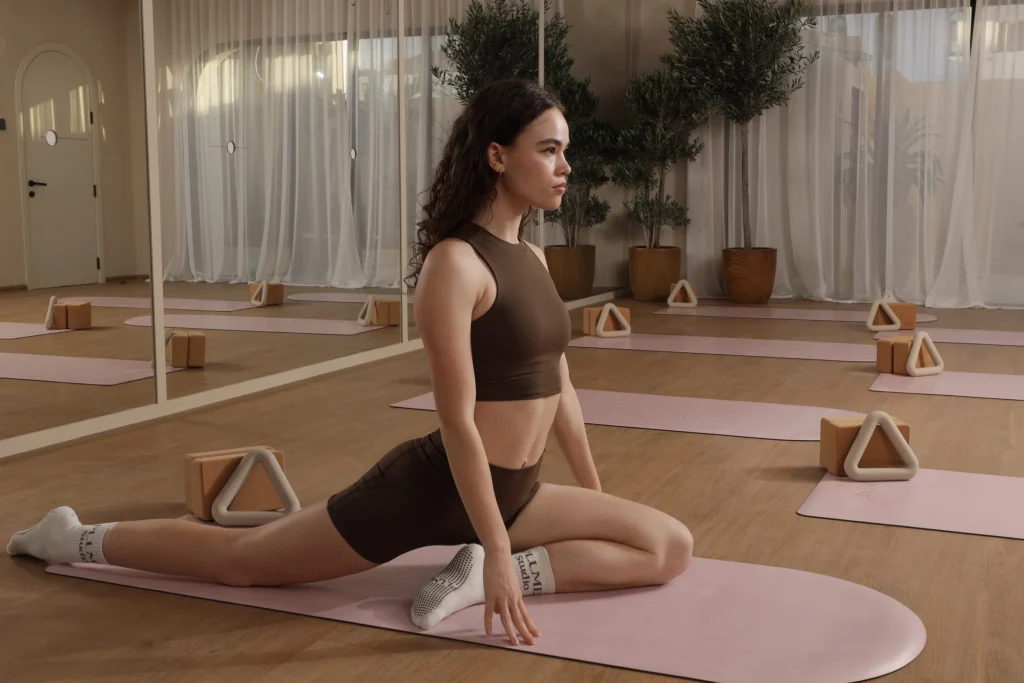Meditation in the Bath: A Method to Connect Body and Mind in Physical Recovery

The Connection Between Bathing and Meditation
In an age defined by relentless hustle and bustle, finding a moment of tranquil solitude can feel like a luxury. Integrating meditation in the bath offers an accessible retreat that not only facilitates relaxation but also enhances our overall mental and physical health. This simple yet effective practice invites individuals to immerse themselves in a sensory experience that combines the soothing properties of water with the profound benefits of mindfulness.
Benefits of Meditative Bathing
The transformative effects of combining bathing with meditation extend beyond mere relaxation, creating a multifaceted approach to well-being. Below are some of the key advantages that one can gain from this harmonious practice:
- Relaxation: Immersing oneself in warm water has a remarkable ability to calm the nervous system. The gentle embrace of heat helps to alleviate muscle tension, while the sensation of buoyancy can induce a meditative state, allowing mental stress to wash away. Aromatherapy with essential oils, such as lavender or eucalyptus, can further enhance this effect, enveloping you in tranquility.
- Mindfulness: The bathtub provides a sanctuary free from distractions, making it an ideal environment for enhancing present-moment awareness. As the warm water envelops you, focusing on the sensations—such as the temperature of the water or the gentle sounds of splashing—can deepen your meditation practice, enabling you to connect with your inner self and surroundings.
- Improved Recovery: Research shows that immersing the body in warm water stimulates better circulation, which can be especially beneficial following physical exertion or stress. This improved blood flow facilitates the delivery of essential nutrients to muscles and organs. Complementing this with meditation not only rejuvenates the mind but also fortifies the recovery process, creating a holistic approach to healing.
Scientific Insights
Contemporary research underscores the efficacy of meditative bathing. Studies have demonstrated its role in fostering a balanced mental state, which is integral to physical recovery post-injury or during periods of heightened stress. The practice encourages individuals to engage with their bodies, heightening awareness of bodily sensations, which can lead to better self-care and understanding of one’s health.
Reimagining Your Bathing Routine
As you contemplate this innovative approach, consider reimagining your bathing experiences. Simple additions, such as soft lighting or calming music, can enhance the ambiance and encourage a deeper connection during your meditation. By integrating tools such as a bath pillow or meditation timer, you can create a personalized space that not only promotes relaxation but also elevates your overall wellness journey.
Ultimately, transforming your bath into a sanctuary for meditation opens up new avenues for health improvement and self-exploration. This practice can lead to a profound appreciation for the intricate relationship between the mind and body, making it a valuable addition to anyone’s self-care regimen.

DIVE DEEPER: Click here to discover calming techniques
Embracing the Art of Meditative Bathing
As the world marches on with its cacophony of daily demands and stresses, the ritual of bathing transforms into a haven for peace and renewal. Meditation in the bath is not merely a whimsical idea; it has deep roots in both historical practices and modern wellness trends. This combination allows individuals to harness the therapeutic effects of warm water while fostering a meditative mindset that nurtures the body and mind simultaneously.
A Symphony of Sensory Experiences
The beauty of meditative bathing lies in its multi-sensory approach. Each element—water, temperature, scents, and sounds—merges to create a sanctuary that invites mindfulness. Here’s how different aspects contribute to a holistic experience:
- Water Temperature: The ideal bath temperature ranges from 92°F to 100°F, striking a balance between comfort and stimulation. This warmth promotes vasodilation, expanding blood vessels to enhance circulation and fuel the body’s healing processes.
- Aromatherapy: The integration of essential oils into the bathing ritual not only refreshes the senses but also stimulates emotional wellness. Scents like peppermint invigorate energy flow, while floral aromas, such as jasmine, foster relaxation, creating a seamless connection between physical rejuvenation and emotional health.
- Sounds of Nature: Incorporating sounds of gentle waves, rustling leaves, or soft instrumental music can immerse you in a serene environment. These natural harmonies help quiet the mind, making it easier to slip into a meditative state and enhancing the overall effectiveness of the practice.
Enhancing Personal Awareness
The bath serves as a unique space for self-reflection and mindfulness. During meditative bathing, participants are encouraged to focus on the sensations within their bodies, such as the feeling of warm water enveloping their skin or the rhythmic sound of their own breath. This heightened awareness promotes a deeper understanding of one’s physical state, allowing for more informed decisions about health and wellness.
Moreover, meditation techniques employed during bathing can vary widely, from simple breathing exercises to guided visualizations. Users can tailor their experiences based on personal preferences. Deep breathing, for example, can significantly lower stress levels and improve oxygen flow, further amplifying the recovery process.
The Role of Routine
To fully realize the benefits of meditation in the bath, consistency is key. Establishing a regular bathing schedule may assist in creating a profound mental and physical recovery practice. Even if it’s just a few minutes a day, dedicating time to this ritual can cultivate a sense of calm amid life’s turbulence and sow the seeds of sustainable wellness.
Ultimately, embracing meditative bathing can be transformative, offering a gateway to not only relaxation but also self-discovery. This practice bridges the gap between body and mind, laying the groundwork for recovery and rejuvenation as part of a broader self-care regimen.
| Advantages | Experience |
|---|---|
| Enhanced Relaxation | Dipping into a warm bath promotes muscle relaxation, easing physical stresses that accumulate throughout the day. |
| Mindfulness Practice | Incorporating meditation while bathing allows individuals to focus on their breath, enhancing mental clarity and reducing anxiety. |
| Connection with Nature | Adding elements like essential oils or natural bath salts can awaken sensory awareness, helping reconnect with nature. |
| Improved Sleep Quality | A calming bath meditation before bedtime can lead to deeper sleep cycles and a more restful night’s rest. |
DISCOVER MORE: Click here to enhance your relaxation techniques
Nurturing the Connection: Mindfulness and Healing
Meditative bathing transcends the act of physical cleanliness; it becomes a conduit for mindfulness that plays a pivotal role in physical recovery. As participants engage with both water and mental stillness, this practice enriches not only their emotional well-being but also their physiological health. Research has shown that a connection between mind and body can significantly aid in recovery from injuries and chronic pain, making meditative bathing an invaluable tool in this journey.
The Science Behind Bathing and Recovery
Numerous studies suggest that immersion in warm water can accelerate healing processes. The buoyancy effect reduces the weight-bearing load on joints, providing a gentle environment for physical therapy, particularly for individuals dealing with arthritis, sports injuries, or recovering from surgery. Incorporating meditation during this healing process enhances the experience; it encourages relaxation and lowers cortisol levels, the stress hormone known to impede healing. A study conducted by the American Psychological Association found that mindfulness practices significantly improve recovery outcomes for patients undergoing rehabilitation.
Embracing Visualization Techniques
Alongside mindfulness, visualization techniques in a meditative bath can significantly bolster healing efforts. This imaginative aspect allows individuals to mentally envision their journey toward recovery, which has been shown to promote actual physical changes. For instance, visualizing oneself free of pain or engaging in desired activities can help prime the body for those very outcomes. Techniques such as picturing a soothing light enveloping sore areas or imagining tension melting away beneath the warm water enhance the connection between the mind and body, facilitating profound relaxation and healing.
Creating the Ideal Mindful Environment
For those looking to maximize the benefits of meditation in the bath, environmental factors can play a crucial role. Incorporating soft lighting, natural elements—such as plants or stones—and limiting distractions will create a tranquil oasis conducive to meditation. Further, choosing a time of day that aligns with personal preferences can enhance this experience. For example, a morning bath may invigorate and set a positive tone for the day, while an evening session can promote winding down and relaxation before bedtime.
- Mindful Menus: Consider delighting your senses through carefully selected bath products. Natural, unscented soaps or bath salts infused with calming herbs—like lavender or chamomile—can heighten relaxation. Meanwhile, gently massaging these products while engaged in deep breathing or concentration can amplify the overall benefits.
- Incorporate Gentle Movements: Many find that performing gentle stretches or movements while submerged in water can release tension. Coupling physical movement with mindful breathing can enhance the effectiveness of meditation, allowing participants to feel every muscle engaging while simultaneously calming the mind.
The synergy between soothing elements and a focused, meditative mindset produces a powerful environment that can facilitate recovery. This is especially beneficial for individuals who suffer from various stress-related conditions, such as anxiety and insomnia, as warm, mindful baths combine physical relaxation with mental tranquility, nurturing a holistic approach to well-being.
DISCOVER MORE: Click here to dive deeper
Conclusion: The Transformative Power of Meditative Bathing
In summary, the practice of meditation in the bath serves as a remarkable method to harmonize the connection between body and mind, enhancing physical recovery in profound ways. By embracing this unique form of mindfulness, individuals engage in a holistic experience that promotes not only their emotional resilience but also their physiological healing. The warmth of the water, combined with focused meditation techniques, can alleviate stress, enhance relaxation, and positively influence recovery outcomes.
As scientific support for the benefits of bathing and mindfulness continues to grow, it becomes increasingly clear that this practice is more than just a ritual; it is a powerful tool for self-care and healing. The incorporation of gentle movements, visualization techniques, and mindful environments further emphasizes the importance of creating a sanctuary for reflection and recovery.
As readers explore the potential of meditative bathing, they are invited to consider its myriad applications. Whether dealing with injuries, managing chronic pain, or simply seeking a tranquil escape, this practice offers an accessible solution. In a world where stress and physical challenges abound, meditative bathing illuminates pathways to recovery that honor the intricate relationship between our bodies and minds. By taking the time to immerse oneself in this transformative practice, countless individuals may find a renewed sense of well-being and empowerment on their journey toward healing.



